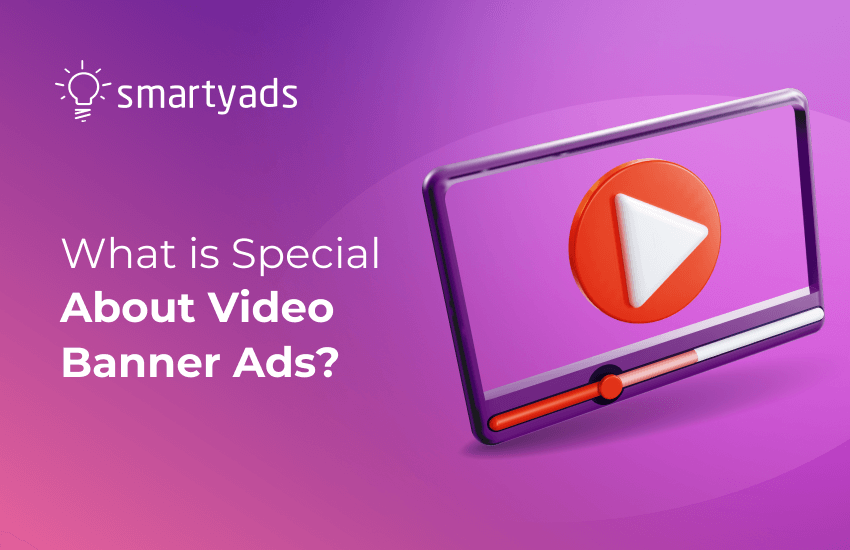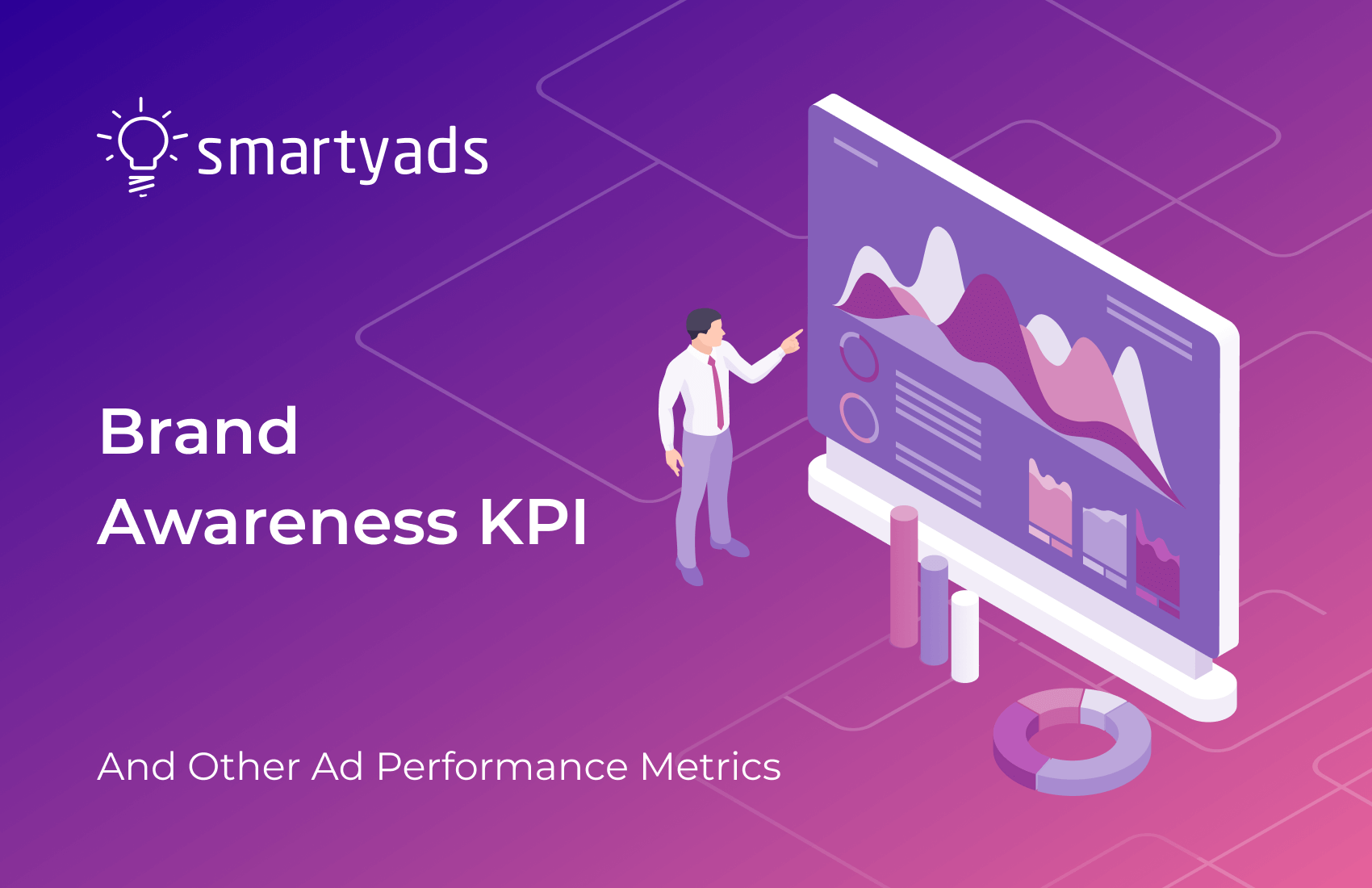Video banner ads have emerged as one of the most prevalent and effective forms of advertising in modern marketing. While we may have primarily encountered video ads on television or video hosting sites a decade ago, their ubiquity has significantly expanded in recent years.
Nowadays, we encounter video banner ads virtually everywhere we turn: as we browse through our social media feeds, venture outdoors, and come across digital banners lining our paths, or even when we access a news website through our browsers.
The prevalence of video ads in various digital spaces demonstrates their enduring relevance and increasing significance in the advertising landscape. With the advancements in technology and the widespread adoption of smartphones and high-speed Internet, video has become easily accessible to a broader audience than ever before.
This accessibility has amplified the impact and reach of the video banner ad, enabling advertisers to engage with potential customers in diverse contexts and environments.
The demand for video content extends far beyond the realm of entertainment, encompassing the world of brands and marketing. In fact, a recent study has revealed a remarkable statistic: a staggering 91% of consumers express a strong desire to see an increased presence of online videos from brands.
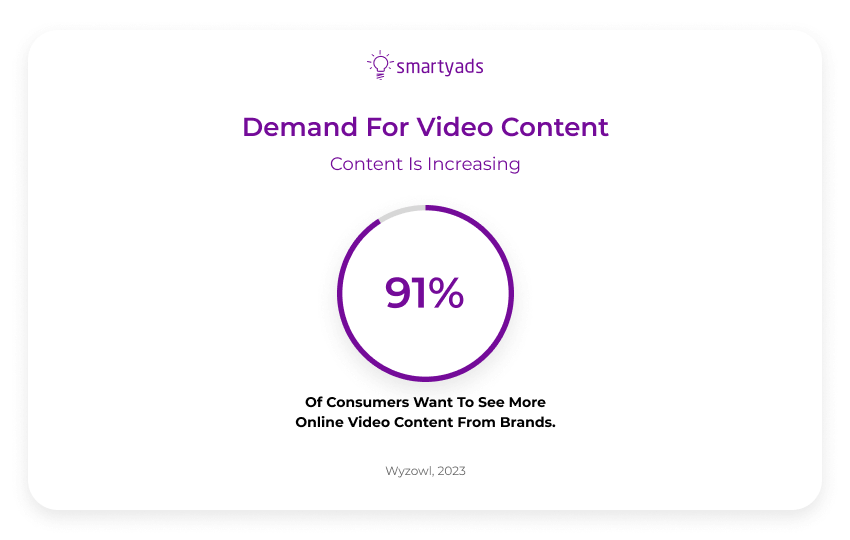
This compelling statistic underscores the evolving preferences and behaviors of modern consumers. People are no longer solely seeking static advertisements or text-based promotions.
Instead, they crave dynamic and immersive experiences that video can deliver. Videos have a unique ability to capture attention, evoke emotions, and convey information in a concise and engaging manner.
In this article, we want to talk about banner video advertising and why it's important for all brands to use it.

What is video advertising?
Video advertising is the practice of promoting products, services, or brands through video content. It involves creating and distributing video ads on platforms like TV, online streaming, social media, websites, and apps to engage with the target audience.
It uses visual and auditory elements to deliver compelling messages and capture viewers' attention. Video ads can be seen on TV, online platforms, and social media, and they offer benefits such as increased engagement and effective communication of brand messages.
What types of video ads are there?
There are a huge variety of video advertising formats, but the most important thing that anyone interested in it needs to know is the three big groups that such advertising is divided into — in-stream video ads, out-stream video ads, and in-banner video ads. And there is a vast difference between group in-stream video advertising and in-banner video advertising.
In-Stream Video Ads
In-stream ads are video ads that play before, during, or after streaming content, such as online videos, live streams, or TV show episodes.
Depending on the platform and ad settings, these ads can be skippable or non-skippable. Skippable in-stream video ads allow viewers to skip the ad after a specified duration, while non-skippable ads require viewers to watch the entire ad. In-stream ads enable advertisers to reach a highly engaged audience within a video-viewing environment.
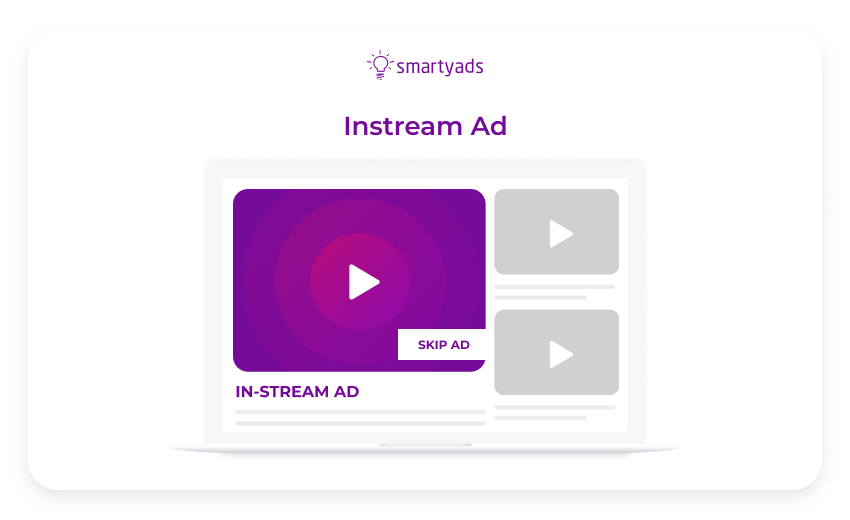
Types of in-stream video ads:
Pre-roll Ads
Pre-roll ads are video ads that play before the desired video. They are typically non-skippable and range from a few seconds to a minute.
Mid-roll Ads
Mid-roll ads are video ads that appear during a natural break within the video. They interrupt the main video and play at a predetermined time or scene.
Post-roll Ads
Post-roll ads are video ads that play after the main video has concluded. They capitalize on the viewer's engagement and serve as a closing message or call-to-action after the primary video.
Out-Stream Video Ads
Out-stream video ads, also known as in-read or native out-stream ads, are video ads that play within non-video environments, such as articles, social media feeds, or websites. These ads typically start playing when they appear and may pause or stop when they move out of the visible screen area.
Out-stream ads aim to provide a less intrusive advertising experience and often blend with the surrounding content. They allow advertisers to reach audiences beyond dedicated video platforms and tap into the engagement of non-video spaces.
Types of out-stream video ads
In-Content Video Ads
These ads are embedded within articles or other textual content. They typically appear within the body of the content as users scroll through, automatically playing when the ad comes into view. These ads offer seamless integration with the surrounding text and provide an engaging video experience within a non-video context.
In-Feed Video Ads
Such ads are integrated within social media feeds or content discovery platforms. They appear alongside other organic content and play automatically as users scroll through the feed.
In-feed video ads allow advertisers to reach a wide audience within a platform where users are already engaged, capturing their attention and generating high visibility.
Native Video Ads
Native out-stream video ads closely match the look and feel of the platform or website where they are displayed. They blend seamlessly with the surrounding content and mimic the style and format of the host environment. Native video ads are designed to provide a non-disruptive user experience while delivering engaging video.
In-App Video Ads
In-app out-stream video ad appears within mobile applications. They can be displayed during natural breaks within the app's user interface or embedded within specific sections of the app, such as news articles, gaming levels, or streaming content. In-app video ads take advantage of the immersive nature of mobile apps to engage users and deliver targeted messaging.
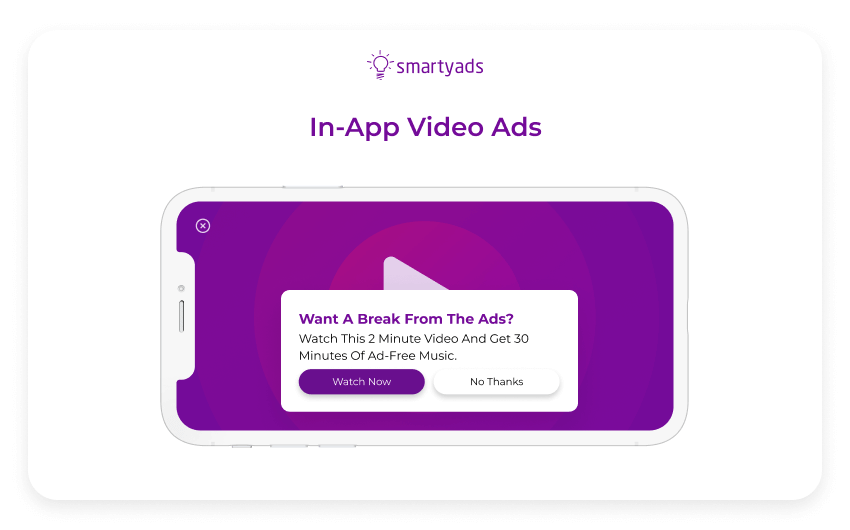
In-Banner Video Ads
In-banner ads are video ad that appears within a standard display banner ad placement on a webpage or mobile app. These video ads are typically smaller in size and are embedded within the ad unit.
In-banner video ads often autoplay when the ad comes into view and may be accompanied by text, images, or other elements of a traditional banner ad.

Types of in-banner video advertising
Auto-Play In-Banner Video Ads
These in-banner ads automatically start playing when the video ad comes into view on the webpage or app. Depending on the user's preferences or ad settings, they may have sound or play on mute. Auto-play in-banner video ads capture viewers' attention with motion and visual elements while still maintaining the context of the surrounding webpage or app content.
Click-to-Play In-Banner Video Ads
Click-to-play in-banner ads require users to click on the video ad to initiate video playback. When users interact with the video banner ad, the video content expands or opens in a separate video player within the banner.
Click-to-play in-banner video ads provide a more interactive experience, allowing users to engage with the content at their own discretion.
Hover-to-Play In-Banner Video Ads
Hover-to-play in-banner video ads start playing when the user hovers their mouse cursor over the static image. The video content then expands or opens in a designated area within the banner video, offering a dynamic and engaging experience. Hover-to-play in-banner video ads encourage user action and capture attention as users interact with the ad unit.
Interactive In-Banner Video Ads
Interactive in-banner video ads incorporate interactive elements within the video content or the banner video itself. Users can engage with the video ad by clicking on various elements, triggering animations, or participating in mini-games or quizzes.
Interactive in-banner video ads provide an immersive and engaging experience that encourages user participation and interaction with the brand.

How to create a banner ad which will captivate attention?
You need to use a programmatic platform like Google Ad Manager or SmartyAds DSP to create good in-banner video ads. However, beyond that, you will need to use some useful tactics, and we have collected the most important ones here:
Clear branding and call-to-action (CTA). Incorporate your brand elements, such as logos and colors, to reinforce brand recognition. Additionally, include a clear CTA that prompts users to take the desired action, such as clicking for more information or making a purchase.
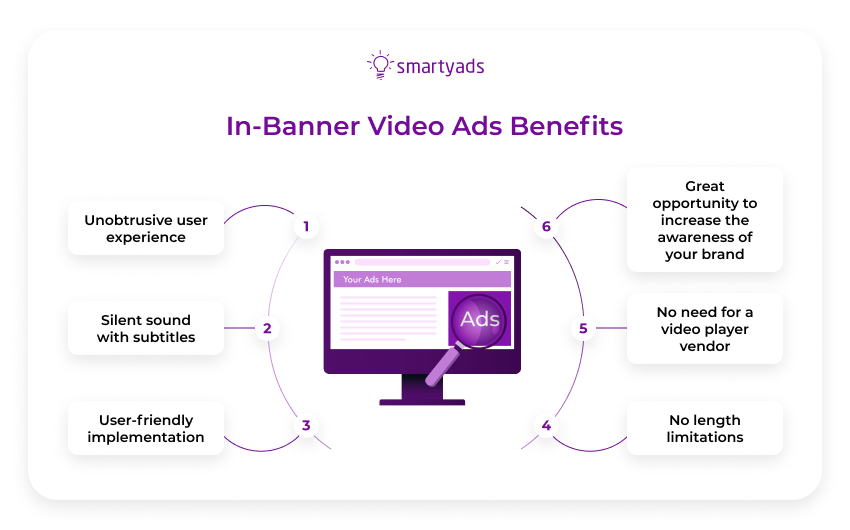
Consider autoplay and sound options. Depending on the platform and user experience, autoplay may be a suitable option to grab attention. However, provide a mute or sound control option to respect user preferences and avoid any disruption.
Tailor content to the context. Ensure the video ad creatives are relevant to the surrounding page or app content. By aligning with users' interests and expectations, you can enhance engagement and prevent the ad from feeling intrusive.
Test and iterate. Continuously test different versions of your in-banner video ads to optimize performance. Monitor key metrics like click-through rates and conversion rates to identify what resonates best with your target audience and refine your ad content accordingly.
Bottom line
Banner ads have been a constant standard in digital advertising for many years, continually evolving and taking on new forms. Banner video ads are one of those forms. You can significantly increase your income using the advantages of banner video advertising.
Launch banner video ad now with SmartyAds DSP.

